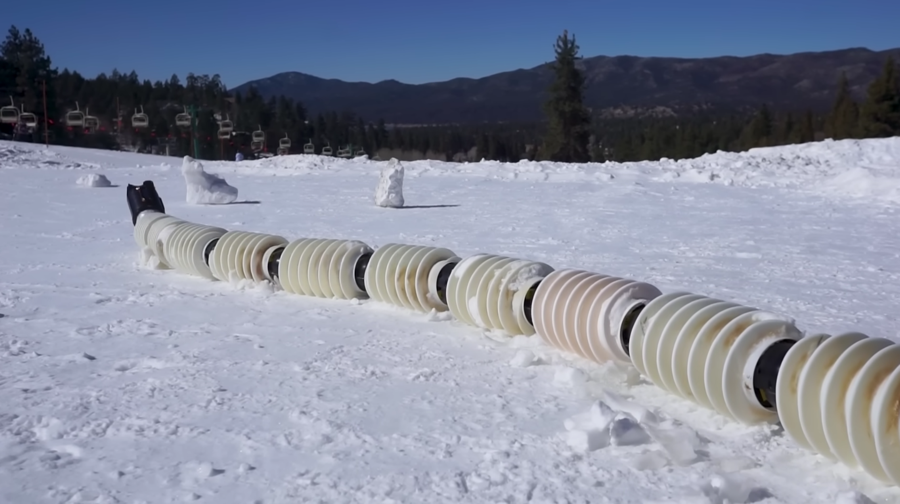In a quest to unlock the mysteries of Saturn’s moon, Enceladus, NASA is deploying a remarkable snake-like robot known as the Exobiology Extant Life Surveyor (EELS). Enceladus, with its tantalizing potential for liquid water, the right chemical composition, and hydrothermal vents, is one of the prime contenders in the search for extraterrestrial life. However, the challenging terrain of this enigmatic moon demands unconventional exploration methods, and EELS is poised to meet this unique challenge.
EELS represents a groundbreaking approach to space exploration with its distinctive serpentine structure. Comprising 10 identical segments that collectively span 13 feet in length, this snake robot has the agility to rotate and propel itself across diverse surfaces, including ice, solid ground, and even water. This adaptability equips EELS to conquer the myriad terrains it may encounter during its mission.

Ensuring autonomous operation is paramount for EELS, considering the vast distances and communication delays between Earth and Saturn. To navigate with independence and precision, the robot is equipped with four pairs of stereo cameras and lidar sensors, which collaboratively generate a 3D map of its surroundings. EELS employs advanced navigation algorithms, utilizing this data to calculate optimal routes and gait patterns as it charts its course through Enceladus’s captivating landscapes.
NASA’s Jet Propulsion Laboratory (JPL) has been diligently testing EELS in a range of terrestrial environments, including ice rinks, Mars simulations, and snow-covered areas. These extensive trials validate the robot’s capacity to maneuver effectively through terrains reminiscent of those awaiting it on Enceladus.
The development and deployment of EELS mark a significant stride forward in the realm of space exploration. NASA’s mission to send this versatile snake-like robot to the distant moon of Enceladus is driven by the ambition to deepen our comprehension of celestial bodies and, perhaps, uncover tangible signs of extraterrestrial life.

As EELS prepares to embark on its groundbreaking journey to Enceladus, it stands as a testament to human ingenuity and the relentless pursuit of knowledge. This robotic trailblazer, with its serpentine grace, has the potential to rewrite the narrative of space exploration and propel us closer to the astonishing possibility of discovering life beyond our home planet.
Resources:
1.https://www.freethink.com/space/snake-robot
2.https://bing.com/search?q=NASA%e2%80%99s+one+of+a+kind+snake+robot+training+to+go+to+space
3.https://nypost.com/2023/05/07/nasa-developing-a-snake-like-robot-for-one-of-saturns-moons/